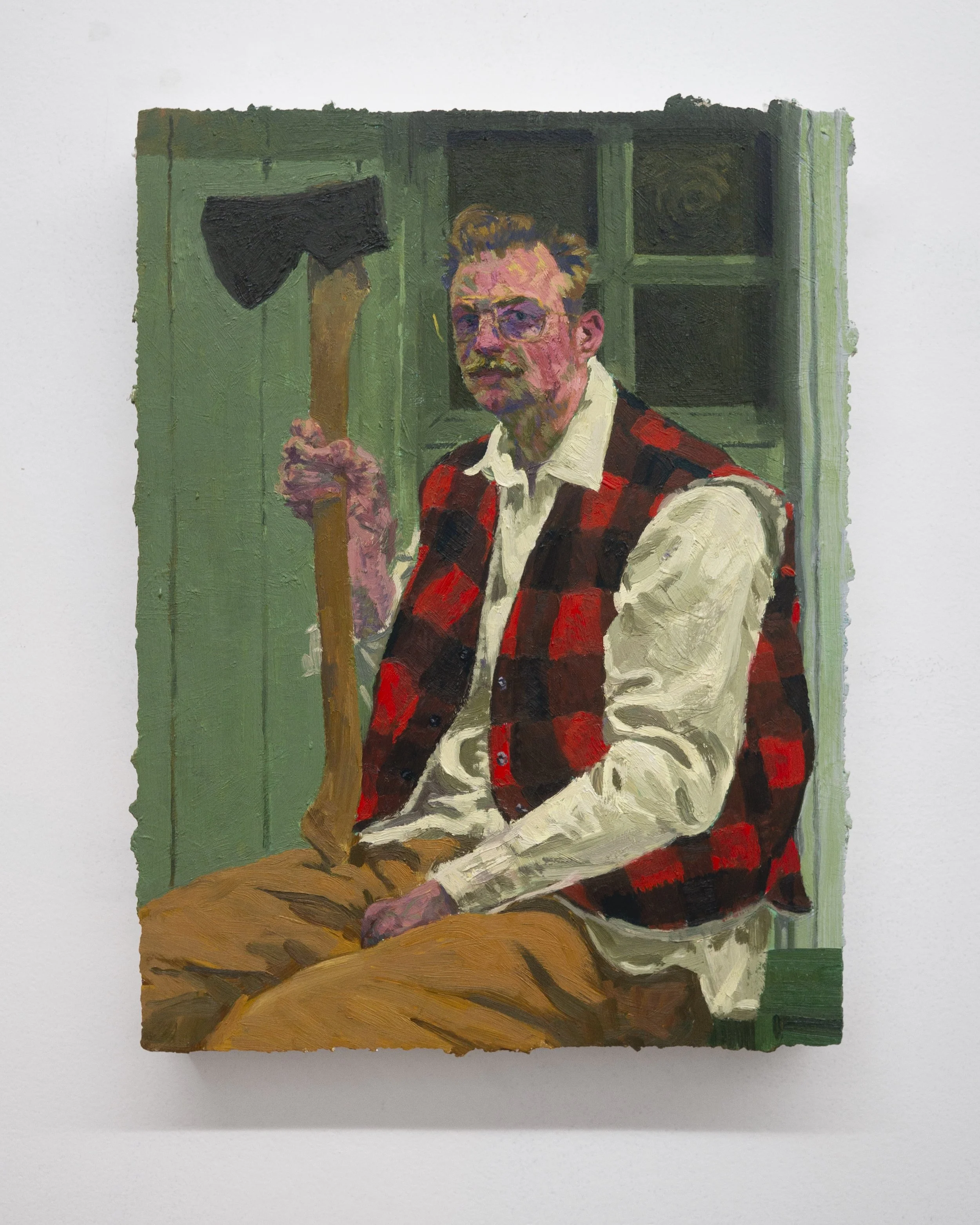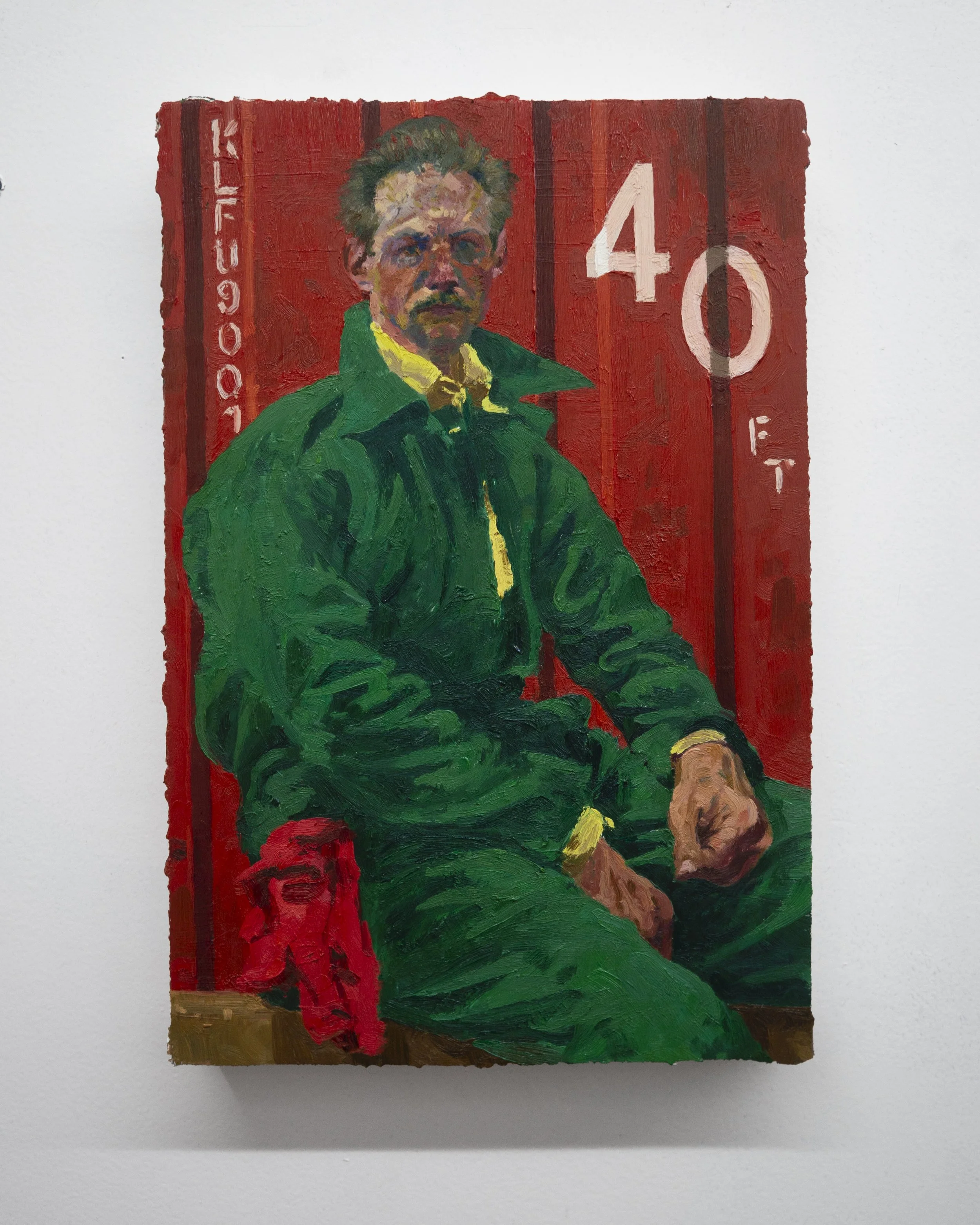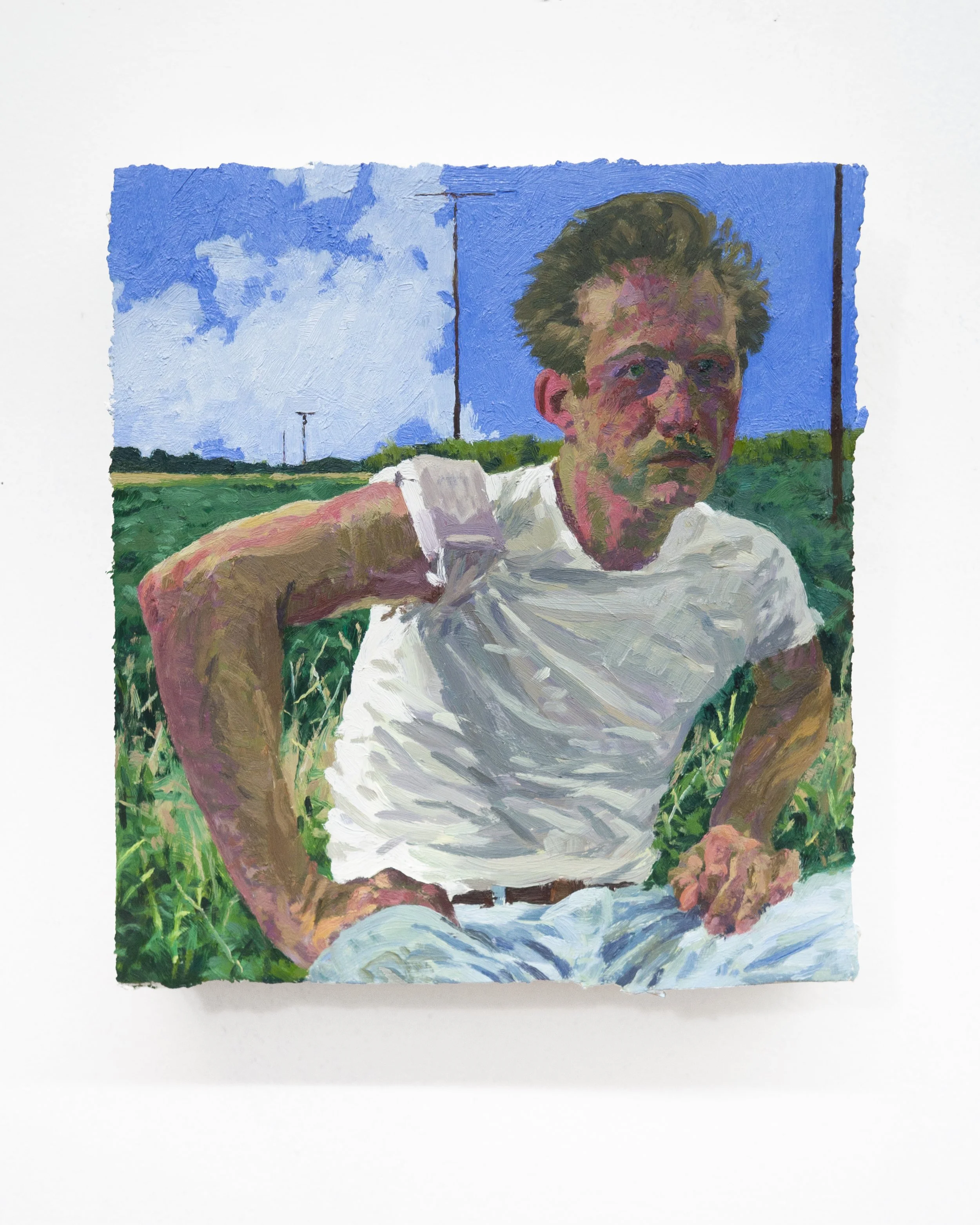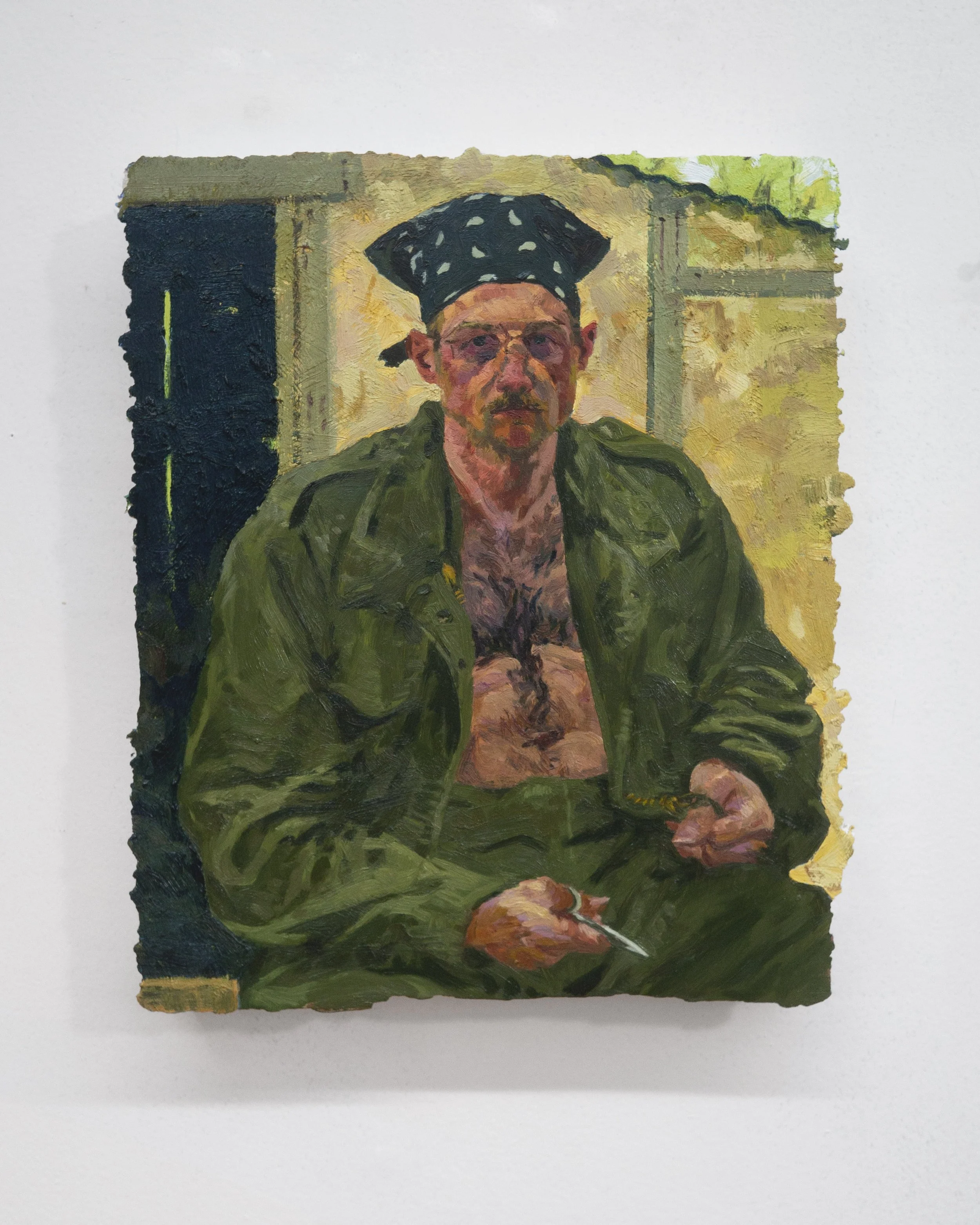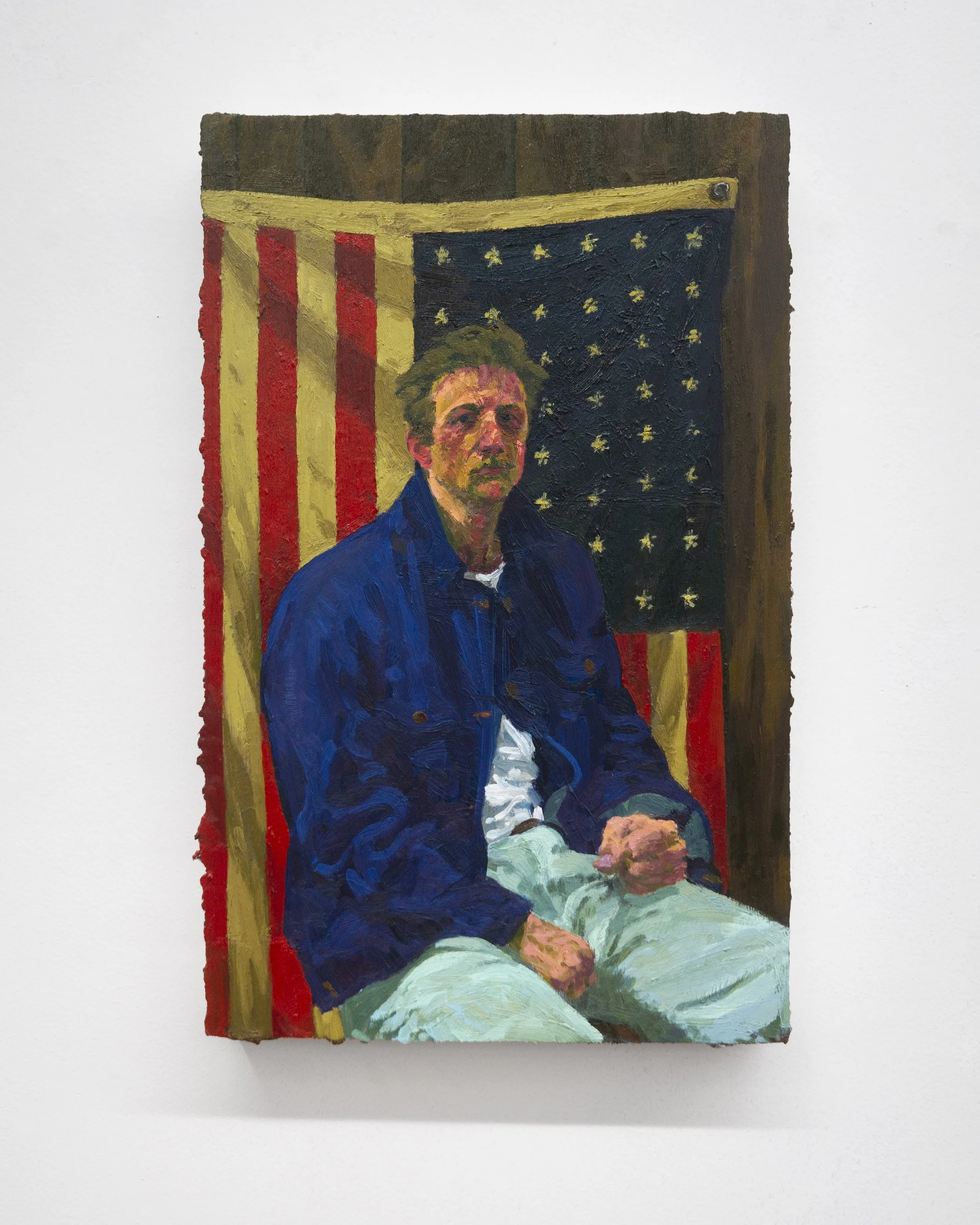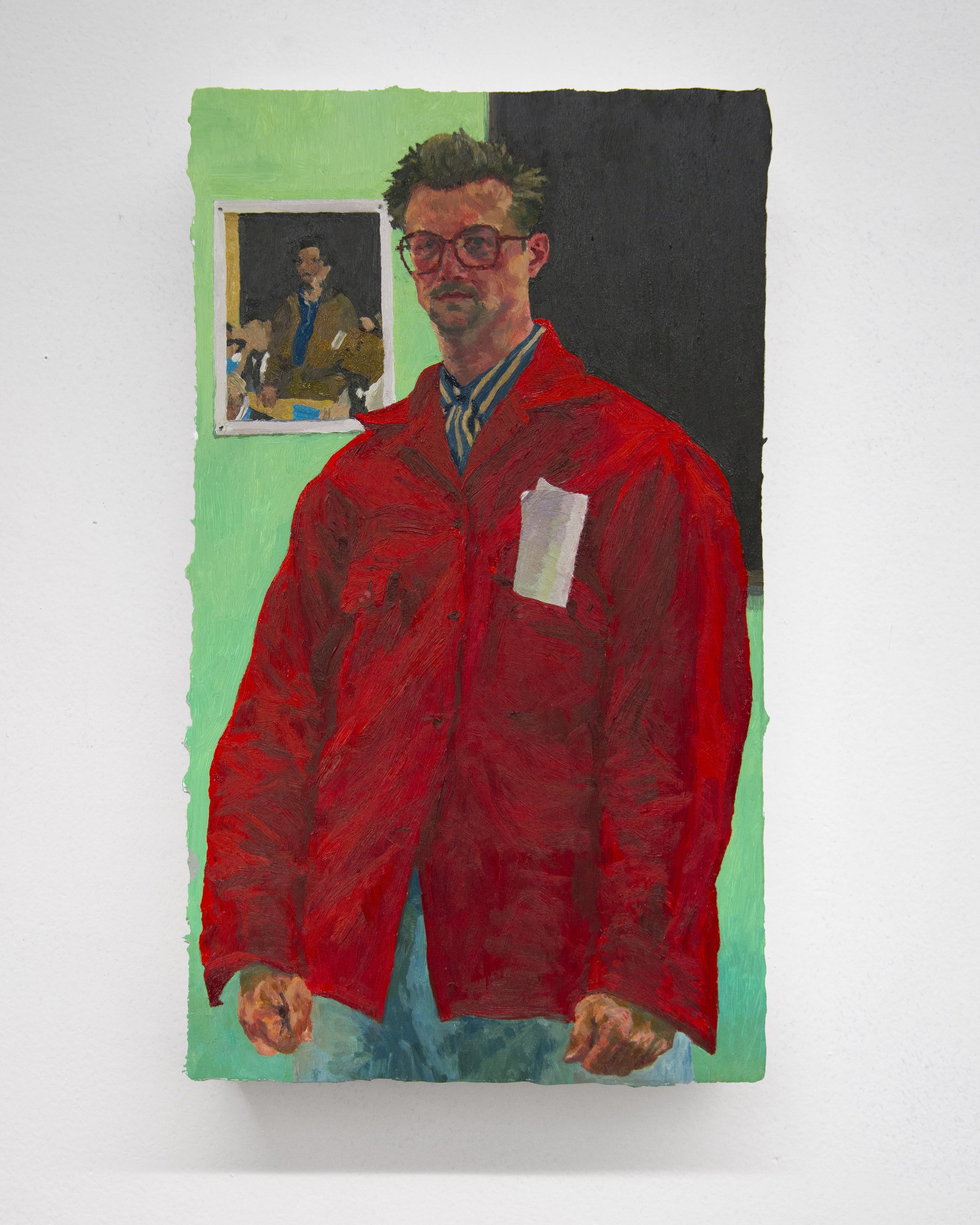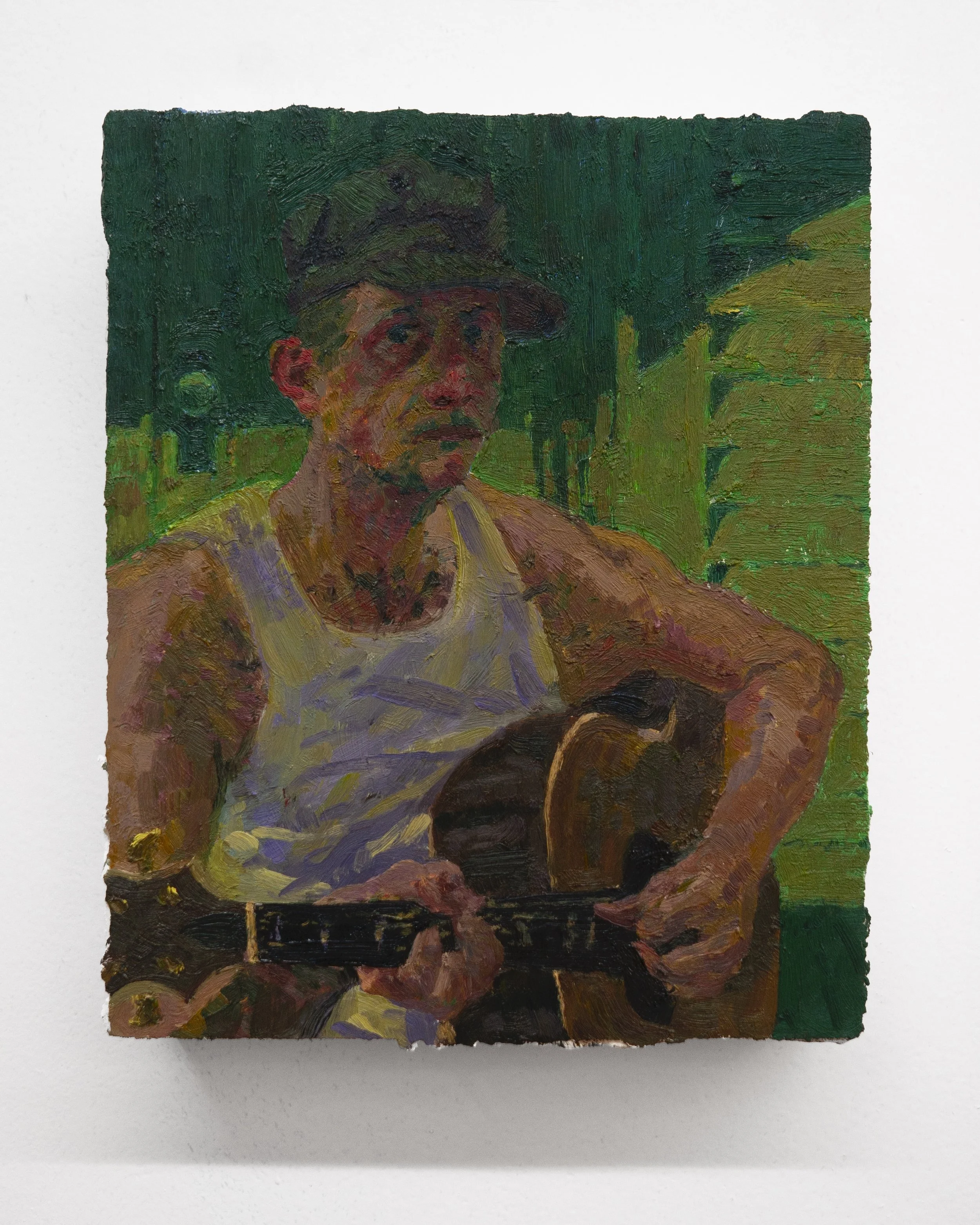Auxier Kline is pleased to present Hitchhike from Saginaw, Samuel Guy’s second solo exhibition with the gallery. Drawing inspiration from American film classics such as Easy Rider (1969), O Brother, Where Art Thou? (2000), and Badlands (1973), Guy takes viewers on a cinematic road trip through the central United States. Presented as a series of character portraits—in which Guy himself performs each role—the paintings depict a pantheon of mythic American men.
With this new body of work, Guy extends and deepens his engagement with the self-portrait. Blending overt Americana with his love of historic portraiture, he broadens questions of self-performance and self-actualization. Using his own image as the central subject, Guy wrestles with archetypes, suggesting the self as a composite entity: a collection of hats worn and roles performed. We may not all be cowboys, Ivy Leaguers, or salt-of-the-earth farmers, yet each exists within us in fragments—ebbing and flowing, embraced or rejected according to circumstance and cultural pressure.
Drawing from a wide lineage of portrait painters—from Holbein to Van Gogh, and Moroni to Amiet—Guy adopts historic motifs of portraiture to animate these characters. Composition, costume, and prop operate in manner akin to Dutch Golden Age portraiture, while color—influenced by modernists such as Giovanni Giacometti—imbues each work with distinct emotional affect.
In a moment marked by division and political volatility, the question of Americanness looms large. Guy’s images refuse simple resolution: they neither idealize a Rockwellian nostalgia nor cynically dismiss the foundational myths from which these figures emerge. Each subject is rendered as both human and mythic, sincere and performative. The portraits shift from tenderness to irony, from quiet introspection to the edge of violence. By casting himself in every role, Guy becomes both culpable and complicit—hero and parody, everyman and outlier.
Samuel Guy, "Axe", Oil on panel, 19 ¼ x 4 ½ x 1 ¾ inches, 2025
Samuel Guy, "Fisherman", Oil on panel, 9 ½ x 7 ½ x 1 ¾ inches, 2024
Samuel Guy, "By the time we made it to Woodstock…" Oil on panel, 27 ¾ x 14 x 1 ¾ inches, 2025
Samuel Guy, "Prairie Man (After Clausen’s Brown Eyes)", Oil on panel, 13 ¼ x 9 ¼ x 1 ¾ inches, 2024
Samuel Guy, "Forty Footer", Oil on panel, 17 ½ x 11 ½ x 1 ¾ inches, 2025
Samuel Guy, "A Prairie Home Companion", Oil on panel, 19 ¾ x 14 ¼ x 1 ¾ inches, 2025
Samuel Guy, "Sleeve Marlbs", Oil on panel , 11 ¼ x 10 ¼ x 1 ¾ inches, 2025
Samuel Guy, "Lieutenant (After Bouveret’s Woman from Brittany)", Oil on panel, 13 ¼ x 11 x 1 ¾ inches, 2025
Samuel Guy, "48 Stars", Oil on panel, 21 ½ x 13 ½ x 1 ¾ inches 2025
Samuel Guy, "Principal", Oil on panel, 16 x 9 ¼ x 1 ¾ inches, 2024
Samuel Guy, "Hobo’s Lullaby", Oil on panel, 10 ¾ x 8 ¾ x 1 ¾ inches, 2025


